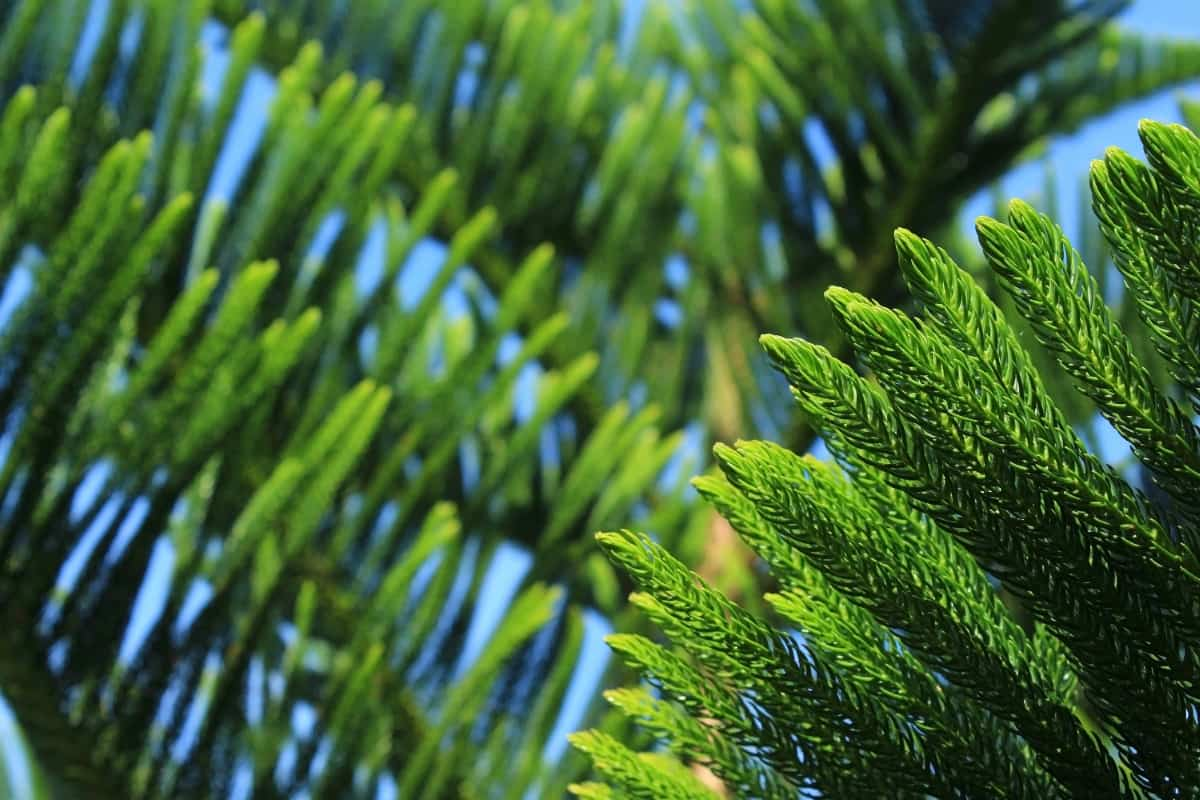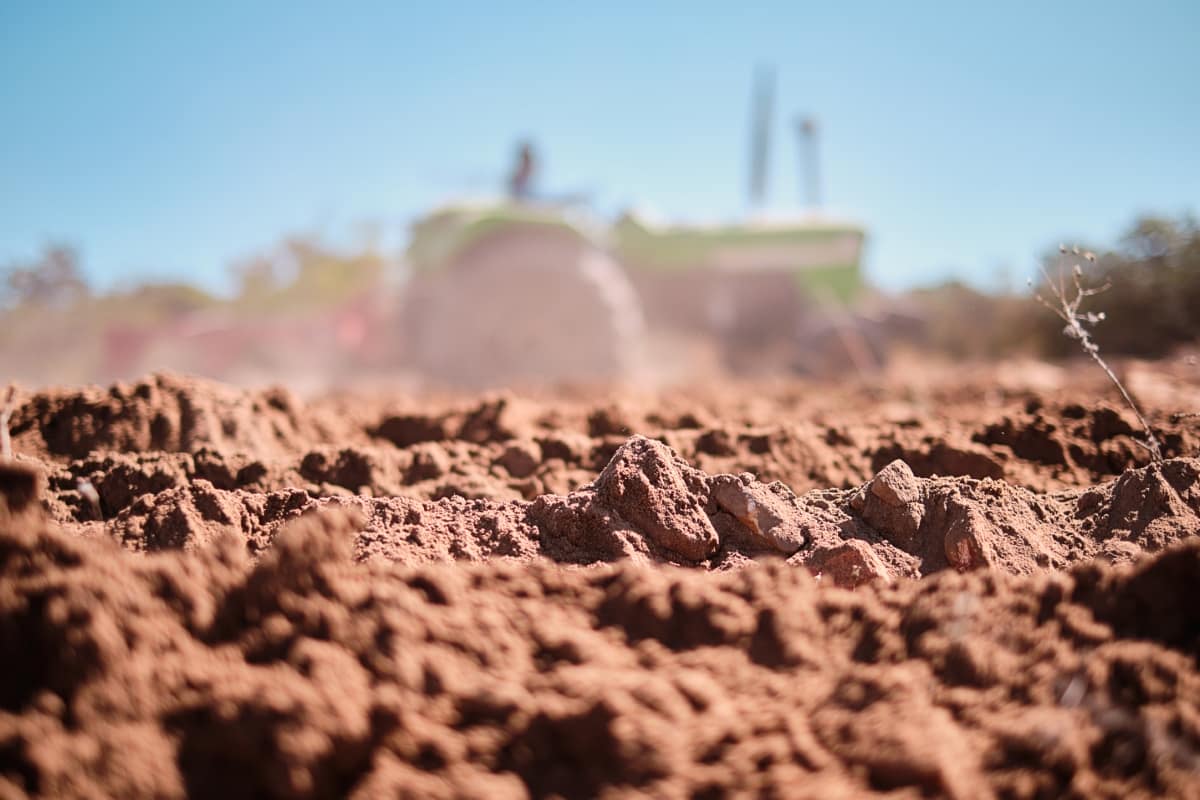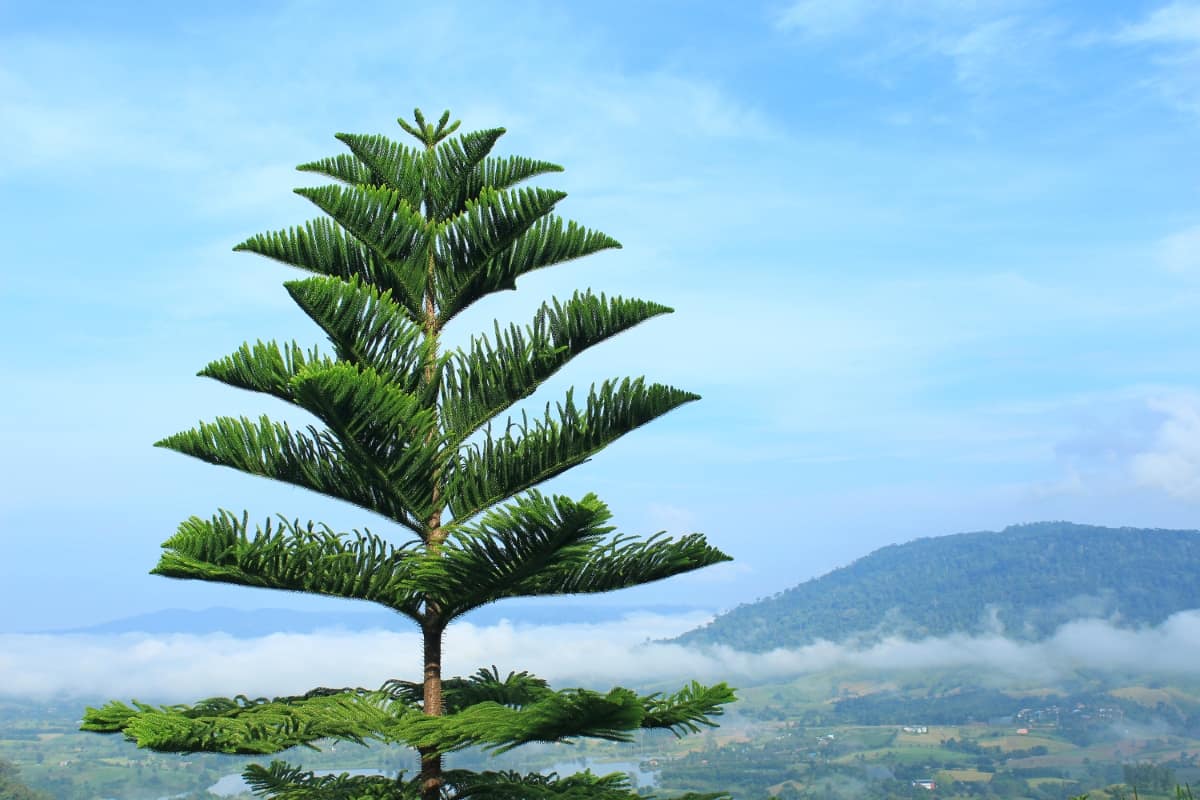Maintaining the health of Norfolk Island Pine trees requires effective management of pests and diseases. By implementing pest prevention and disease control strategies, growers can ensure the vitality of their Norfolk Island Pine trees. In this blog, we’ll explore various techniques and solutions for Norfolk Island Pine pest control and disease management.

Norfolk Island Pine Pests and Diseases
Understanding Norfolk Island Pine Pests and Diseases
To effectively manage Norfolk Island Pine pests and diseases, it’s essential to understand the common threats they face. By identifying the signs and symptoms of pests and diseases, you can take timely action to protect your trees and prevent further damage.
Overview of Common Threats
Common pests and diseases that affect Norfolk Island Pines include scale insects, mealybugs, spider mites, sooty mold, root rot, needle blight, fungal infections like anthracnose, and yellowing. Each poses unique challenges to the health and vitality of these trees.
Importance of Early Detection
Early and timely detection of pests and diseases is important for effective management. By spotting signs of infestation or infection early on, you can implement timely interventions to prevent further spread and minimize damage to Norfolk Island Pines.
Cultural Practices for Prevention
Cultural practices play a significant role in preventing pest and disease problems in Norfolk Island Pines. Proper planting techniques, soil and water management, and regular pruning can help maintain tree health and resilience against pests and diseases.
Proper Planting Techniques
When planting Norfolk Island Pines, ensure they are placed in well-draining soil and receive adequate sunlight. Avoid planting them too deeply or too shallowly, as improper planting can stress the trees and make them more susceptible to pests and diseases.
Soil and Water Management
Maintaining proper soil moisture and drainage is essential for Norfolk Island Pine’s health. Avoid overwatering, as soggy soil can promote root rot and fungal infections. Mulching near the base of the tree can help retain moisture and reduce soil temperature.
In case you missed it: How to Treat Viral Diseases in Papaya: Organic, Natural, Chemical and Homemade Control

Integrated Pest Management (IPM) Strategies
Integrated Pest Management (IPM) combines various methods, including cultural, biological, and chemical control measures, to control pests effectively while reducing environmental impact. Adopting IPM strategies ensures sustainable pest management for Norfolk Island Pines.
Biological Control Methods
Biological control methods involve using natural enemies of pests, such as predatory insects or beneficial microorganisms, to regulate pest populations. Introducing these natural predators can help control pest outbreaks in Norfolk Island Pine plantations.
Chemical Control Measures
Chemical control measures, such as insecticides and fungicides, can be used as a last resort for managing severe pest or disease infestations. However, it’s essential to use these products judiciously and according to label instructions to minimize environmental impact.
Identifying Common Pests
In Norfolk Island, Pine pest control identification is crucial for implementing targeted control measures. Common pests include scale insects, which appear as small, waxy bumps on the branches; mealybugs, which leave a white, cottony residue; and spider mites, which cause stippling on foliage.
Scale Insects
Scale insects are common pests of Norfolk Island Pines, sucking sap from the branches and causing yellowing and stunted growth. They secrete a protective waxy coating that makes them difficult to control with traditional insecticides.
Mealybugs
Mealybugs are another common pest of Norfolk Island Pines, feeding on sap and excreting honeydew, which can lead to sooty mold growth. They appear as white, cottony masses on the branches and foliage.
Spider Mites
Spider mites are tiny arachnids that feed and damage the undersides of Norfolk Island Pine leaves, causing stippling and discoloration. They thrive in dry conditions and can rapidly infest trees, especially in indoor settings with low humidity.
Sooty Mold
Sooty mold is a fungal growth that develops on honeydew excreted by pests like mealybugs and aphids. It appears as a black, powdery coating on the leaves and branches of Norfolk Island Pines, detracting from their aesthetic appeal.
Recognizing Disease Symptoms
Norfolk Island Pines are susceptible to various diseases, including root rot, needle blight, fungal infections like anthracnose, and yellowing. Identifying the symptoms of these diseases is crucial for implementing appropriate disease control strategies.
Root Rot
Root rot is a most common fungal infestation that affects Norfolk Island Pines, particularly in poorly drained soils. Symptoms include wilting, yellowing foliage, and root discoloration. Proper soil and water management are required to prevent root rot.
Needle Blight
Needle blight is a fungal infestation that causes browning and premature shedding of needles in Norfolk Island Pines. Infected trees may exhibit sparse foliage and reduced vigor. Pruning infected branches and improving air circulation can help manage needle blight.
Fungal Infections
Various fungal infections, such as anthracnose, can affect Norfolk Island Pines, causing leaf spots, cankers, and dieback. Fungal diseases thrive in warm, humid conditions, making proper ventilation and fungicide applications essential for disease management for Norfolk Island Pine.
Anthracnose
Anthracnose is a fungal infestation that causes dark, sunken lesions on Norfolk Island Pine foliage. Severe infections can lead to defoliation and branch dieback. Regular sanitation and fungicide treatments can help control anthracnose outbreaks.
Yellowing
Various factors, including nutrient deficiencies, water stress, pests, and diseases, can cause the yellowing of Norfolk Island Pine foliage. Proper diagnosis is essential for addressing the underlying cause and implementing appropriate management strategies.
Monitoring and Surveillance Techniques
To prevent pests on Norfolk Island Pine, regular monitoring and surveillance techniques are essential. Norfolk Island Pine disease diagnosis relies on careful observation of symptoms such as wilting foliage, abnormal growth patterns, or discoloration. Implementing a systematic monitoring program allows arborists to detect pest infestations early, enabling timely intervention and preventing potential damage to the trees.
Regular Inspection Procedures
Regular inspection procedures are vital for maintaining the health and vigor of Norfolk Island Pine trees. During inspections, arborists thoroughly assess the trees for signs of pests, diseases, or stress factors. Key indicators include pest activity, fungal growth, or physical damage to the foliage. By conducting regular inspections, arborists can identify problems promptly and implement appropriate management strategies.
Utilizing Traps and Monitoring Devices
Traps and monitoring devices are valuable tools for assessing pest populations and activity levels in Norfolk Island Pine trees. Various traps, such as sticky traps or pheromone traps, can be strategically placed to capture specific pests. Monitoring devices, such as insect tape or tree banding, provide real-time data on pest activity, guiding control efforts effectively.
Non-Chemical Control Measures
Non-chemical control measures offer environmentally friendly alternatives for managing pests on Norfolk Island Pine trees. These methods include cultural practices, such as proper pruning and sanitation, to reduce pest habitat and breeding grounds. Additionally, biological controls, such as introducing natural predators or parasitoids, can help regulate pest populations without the use of pesticides.
Pruning and Sanitation Practices
Pruning and sanitation practices play a critical role in Norfolk Island Pine pest management. Regular pruning removes dead or diseased branches, improving air circulation and reducing opportunities for pest infestations. Sanitation measures, such as removing fallen leaves or debris, help eliminate potential breeding sites for pests and diseases.
Physical Barriers
Physical barriers provide an effective means of protecting Norfolk Island Pine trees from pest damage. Tree wraps, netting, or fencing can be installed to prevent access by pests or wildlife. These barriers act as deterrents, reducing the risk of pest infestations and preserving tree health.
In case you missed it: Pest Management in Ivy Gourd: 100% Effective Treatment and Control Solutions

Chemical Treatments
In severe pest infestations, chemical treatments may be necessary to control pests on Norfolk Island Pine trees. Selective pesticides formulated for ornamental trees can be applied following safety guidelines and considering environmental impact. However, chemical treatments should be used judiciously and as a last resort to minimize adverse effects on beneficial organisms and the ecosystem.
Selecting and Using Pesticides Safely
When selecting and using pesticides on Norfolk Island Pine trees, it’s essential to prioritize safety and environmental stewardship. Choose products labeled for use on ornamental trees and follow application instructions meticulously. Wear appropriate personal protective equipment and avoid spraying during windy conditions to minimize off-target effects.
Application Techniques
Proper application techniques are critical for maximizing the efficacy of pesticides while minimizing environmental impact. Apply pesticides evenly and directly to affected areas, following label instructions for dosage, frequency, and reapplication intervals. Calibrate equipment carefully to ensure accurate delivery and reduce the risk of over-application.
Seasonal Management Considerations
Seasonal management considerations are essential for adapting pest control strategies to the changing needs of Norfolk Island Pine trees throughout the year. Adjust treatments based on seasonal pest activity, weather conditions, and tree growth stages for optimal effectiveness. By tailoring management practices to seasonal variations, arborists can maintain tree health and vitality year-round.
Winter Protection Methods
Winter protection methods are crucial for safeguarding Norfolk Island Pine trees from cold stress and associated pest issues. Mulching around the base of the tree, wrapping the trunk with burlap, or providing adequate insulation can help prevent frost damage and maintain tree health during winter months.
Summer Pest Prevention
Summer pest prevention focuses on minimizing conditions conducive to pest infestations on Norfolk Island Pine trees. Ensure proper watering practices, adequate sunlight exposure, and good air circulation to promote tree vigor and resilience against pests during the growing season.
Reasons for Norfolk Island Pine Drying Out
Norfolk Island Pine trees may dry out due to various factors, including underwatering, overwatering, nutrient deficiencies, root rot, or pest infestations. Diagnosing the underlying cause is crucial for implementing appropriate remedial measures to revive the tree and restore its health and vitality.
Saving a Dying Norfolk Island Pine
Saving a dying Norfolk Island Pine requires prompt action and targeted interventions to address the underlying issues affecting tree health. Conduct thorough research to identify the root cause of decline, whether it be pests, diseases, or environmental stressors. Implement appropriate remedies, such as adjusting watering practices, improving soil drainage, or treating pests and diseases, to rejuvenate the tree and promote recovery.
Conclusion
Managing pests and diseases on Norfolk Island Pine trees is important for maintaining their health and vitality. By identifying pests early, implementing effective pest management techniques, and utilizing disease control strategies, growers can prevent and mitigate damage to their Norfolk Island Pine trees. Sustainable pest management practices ensure the long-term health and resilience of these beautiful trees.
- Deworming Schedule for Dogs/Puppies: A Beginners Guide
- How to Prevent and Control Parasites in Goats
- Beneficial Insects in Pest Management
- Natural Solutions for Pest Control in Flower Gardens
- Types of Fungicides Used in Agriculture
- Common Issues in the Fruit Development Stage of Pomegranate Farming
- Fruit Development Issues in Papaya: Easy Solutions and Treatment
- Soil-Borne Diseases and How to Protect Your Plants
- Practices to Prevent Disease Spread in the Garden